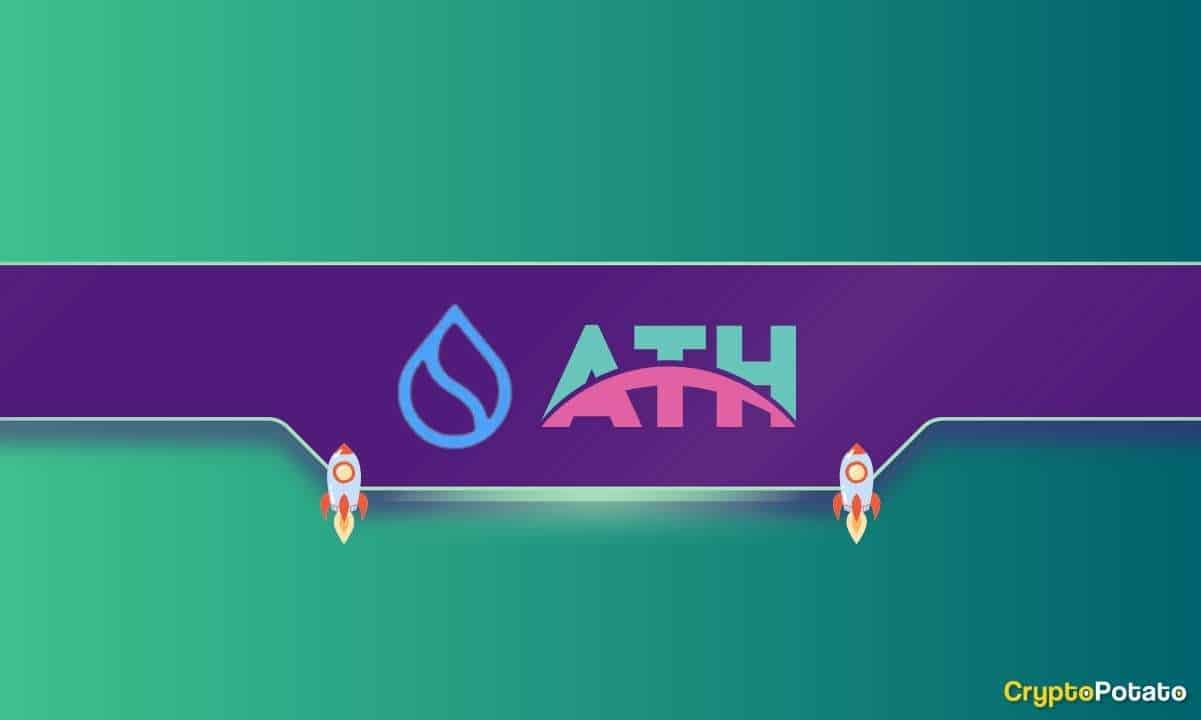Least Developed Countries & Resilience: Outcomes From The Third Future Forum

Table of Contents
The Third Future Forum brought together global leaders to address the critical issue of building resilience in Least Developed Countries (LDCs). This article summarizes the key outcomes, highlighting challenges, innovative solutions, and collaborative strategies discussed to foster sustainable development and economic growth in these vulnerable nations. We'll delve into the forum's discussions on climate change adaptation, technological advancements, and improved governance structures essential for enhancing LDC resilience. The overarching goal: to equip LDCs with the tools and resources necessary to withstand shocks and thrive in an increasingly uncertain world.
Climate Change Adaptation in Least Developed Countries
Least Developed Countries (LDCs) are disproportionately vulnerable to the impacts of climate change. Their limited resources and capacity to adapt exacerbate the challenges posed by a changing climate. The Third Future Forum emphasized the urgency of addressing this vulnerability.
Vulnerability to Climate Shocks
LDCs face a multitude of climate-related threats:
- Increased frequency and intensity of extreme weather events: Droughts, floods, and cyclones are becoming more frequent and severe, causing widespread devastation and disrupting livelihoods.
- Food insecurity exacerbated by climate change: Changes in rainfall patterns and increased temperatures reduce crop yields, leading to widespread food shortages and malnutrition.
- Loss of livelihoods and displacement due to environmental degradation: Rising sea levels, desertification, and land degradation force people to leave their homes and abandon their traditional livelihoods.
- Limited adaptive capacity due to lack of resources and infrastructure: LDCs often lack the financial resources, technology, and infrastructure necessary to adapt to climate change effectively.
The impact is devastating. For example, a prolonged drought can decimate agricultural production, leading to famine and mass migration. Similarly, a major cyclone can wipe out entire communities, leaving behind widespread destruction and long-term economic hardship. These events disproportionately affect the most vulnerable populations within LDCs.
Innovative Adaptation Strategies
The forum highlighted several innovative adaptation strategies:
- Investing in climate-resilient agriculture: Promoting drought-resistant crops, improving irrigation systems, and implementing climate-smart agricultural practices are crucial for ensuring food security.
- Developing early warning systems for extreme weather events: Investing in early warning systems allows communities to prepare for and mitigate the impacts of extreme weather events, saving lives and reducing economic losses.
- Promoting climate-smart technologies: Utilizing technologies such as drought-tolerant seeds, efficient irrigation systems, and renewable energy sources can enhance resilience to climate change.
- Strengthening community-based adaptation initiatives: Empowering local communities to participate in adaptation planning and implementation ensures that solutions are tailored to specific needs and contexts.
Success stories from initiatives like the use of drought-resistant crops in sub-Saharan Africa and early warning systems in the South Pacific demonstrate the effectiveness of these strategies.
Financing Climate Resilience
Securing adequate funding is critical for implementing adaptation measures.
- Need for increased financial assistance from developed countries: Developed nations must fulfill their commitments to provide financial support to LDCs for climate adaptation.
- Exploring innovative financing mechanisms: Innovative mechanisms such as climate bonds, green funds, and insurance schemes can help to mobilize additional resources.
- Improving access to climate finance for LDCs: Streamlining access to existing climate funds and simplifying application processes is essential for ensuring that LDCs can access the financial resources they need.
The significant funding gap for climate adaptation in LDCs requires immediate attention. Initiatives like the Green Climate Fund play a crucial role, but more resources and streamlined access are imperative.
Technological Advancements for LDC Resilience
Technology offers immense potential for enhancing resilience in LDCs. The Third Future Forum emphasized the importance of leveraging technology to address development challenges.
Leveraging Technology for Development
Technological advancements can transform various sectors:
- Use of mobile technology for financial inclusion: Mobile banking and mobile money services can expand access to financial services, particularly for rural populations.
- Application of remote sensing and GIS for disaster risk reduction: Remote sensing and Geographic Information Systems (GIS) can be used to map vulnerable areas, assess risks, and plan for disaster response.
- Implementation of digital literacy programs: Equipping people with digital skills empowers them to participate in the digital economy and access vital information.
- Access to renewable energy technologies: Renewable energy sources such as solar and wind power can provide reliable and sustainable energy access, reducing reliance on fossil fuels.
The integration of technology in agriculture, healthcare, and education can significantly boost economic growth and improve the quality of life in LDCs.
Bridging the Digital Divide
Addressing the digital divide is crucial for realizing the full potential of technology.
- Expanding internet access and affordability: Investing in infrastructure and reducing the cost of internet access are essential for ensuring that everyone can connect.
- Developing digital infrastructure: Building robust and reliable digital infrastructure is crucial for supporting the growth of the digital economy.
- Promoting digital skills development: Investing in education and training programs to equip people with digital skills is critical for ensuring that everyone can benefit from technology.
Bridging the digital divide requires a concerted effort by governments, the private sector, and international organizations to ensure equitable access to technology and digital literacy.
Strengthening Governance and Institutional Capacity
Effective governance and strong institutions are fundamental to building resilience.
Good Governance for Sustainable Development
Good governance is crucial for sustainable development in LDCs:
- Promoting transparency and accountability: Transparent and accountable governance fosters trust and improves the effectiveness of government programs.
- Strengthening rule of law: A strong rule of law provides stability and predictability, which are essential for attracting investment and promoting economic growth.
- Improving public financial management: Efficient and effective management of public finances is crucial for ensuring that resources are used effectively to support development priorities.
- Empowering local communities: Empowering local communities to participate in decision-making processes ensures that development initiatives are relevant and sustainable.
Capacity Building Initiatives
Investing in capacity building is essential for strengthening institutions:
- Training programs for government officials: Providing training to government officials on best practices in governance and public administration is essential for improving the effectiveness of government.
- Technical assistance from international organizations: International organizations can provide valuable technical assistance and expertise to support institutional reforms.
- Support for institutional reforms: Support for institutional reforms is essential for strengthening the capacity of government institutions to effectively deliver public services.
These initiatives are crucial for fostering good governance and sustainable development.
Conclusion
The Third Future Forum underscored the urgent need for concerted efforts to enhance the resilience of Least Developed Countries. Addressing climate change vulnerability, leveraging technological advancements, and strengthening governance structures are crucial for fostering sustainable development and economic growth in these nations. Increased financial support, collaborative partnerships, and targeted capacity-building initiatives are essential to achieve meaningful progress. By embracing innovative solutions and working together, we can build a more resilient and prosperous future for Least Developed Countries. Let's continue to prioritize building resilience in Least Developed Countries through collaborative action and impactful strategies. Investing in the resilience of LDCs is not just a moral imperative, but a strategic necessity for global stability and prosperity.

Featured Posts
-
 Would A Packers Steelers Trade Fulfill Josh Jacobs Green Bay Wr 1 Desire
May 07, 2025
Would A Packers Steelers Trade Fulfill Josh Jacobs Green Bay Wr 1 Desire
May 07, 2025 -
 White Lotus Season 3 Oscar Winning Guest Star Appears
May 07, 2025
White Lotus Season 3 Oscar Winning Guest Star Appears
May 07, 2025 -
 Shea Langeliers Two Run Homer Powers As Past Mariners
May 07, 2025
Shea Langeliers Two Run Homer Powers As Past Mariners
May 07, 2025 -
 Najpopularniejsze Teksty Jacka Harlukowicza Na Onecie 2024
May 07, 2025
Najpopularniejsze Teksty Jacka Harlukowicza Na Onecie 2024
May 07, 2025 -
 Ripple Price Prediction Impact Of Recent Xrp Whale Transaction
May 07, 2025
Ripple Price Prediction Impact Of Recent Xrp Whale Transaction
May 07, 2025
Latest Posts
-
 Sms Dolandiriciligi Sikayetlerinde Artis Son Dakika Gelismeleri
May 08, 2025
Sms Dolandiriciligi Sikayetlerinde Artis Son Dakika Gelismeleri
May 08, 2025 -
 Recent Crypto Market Rally Analyzing The Gains Of Dogecoin Shiba Inu And Sui
May 08, 2025
Recent Crypto Market Rally Analyzing The Gains Of Dogecoin Shiba Inu And Sui
May 08, 2025 -
 Dogecoin Shiba Inu Sui Price Increase Whats Driving This Weeks Crypto Market Movement
May 08, 2025
Dogecoin Shiba Inu Sui Price Increase Whats Driving This Weeks Crypto Market Movement
May 08, 2025 -
 Dogecoin Shiba Inu And Sui Price Surge Understanding The Reasons Behind The Rally
May 08, 2025
Dogecoin Shiba Inu And Sui Price Surge Understanding The Reasons Behind The Rally
May 08, 2025 -
 Why Dogecoin Shiba Inu And Sui Are Soaring This Week A Market Analysis
May 08, 2025
Why Dogecoin Shiba Inu And Sui Are Soaring This Week A Market Analysis
May 08, 2025
